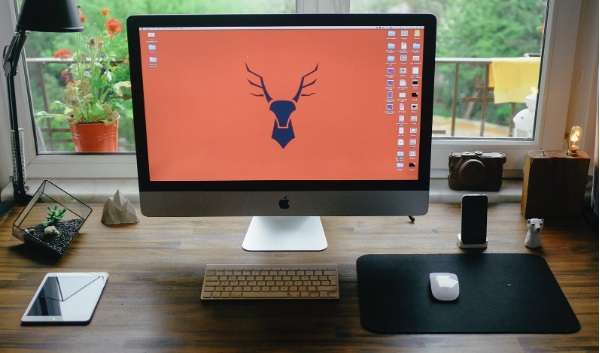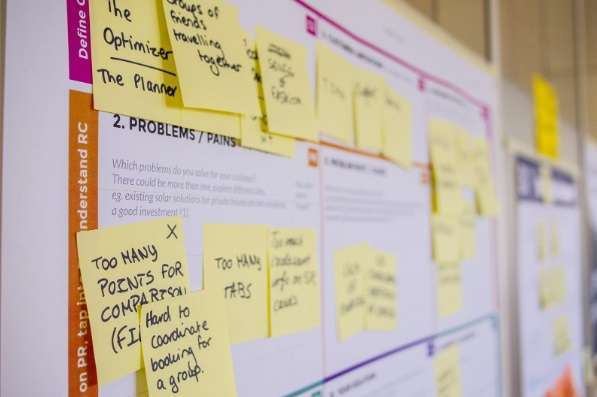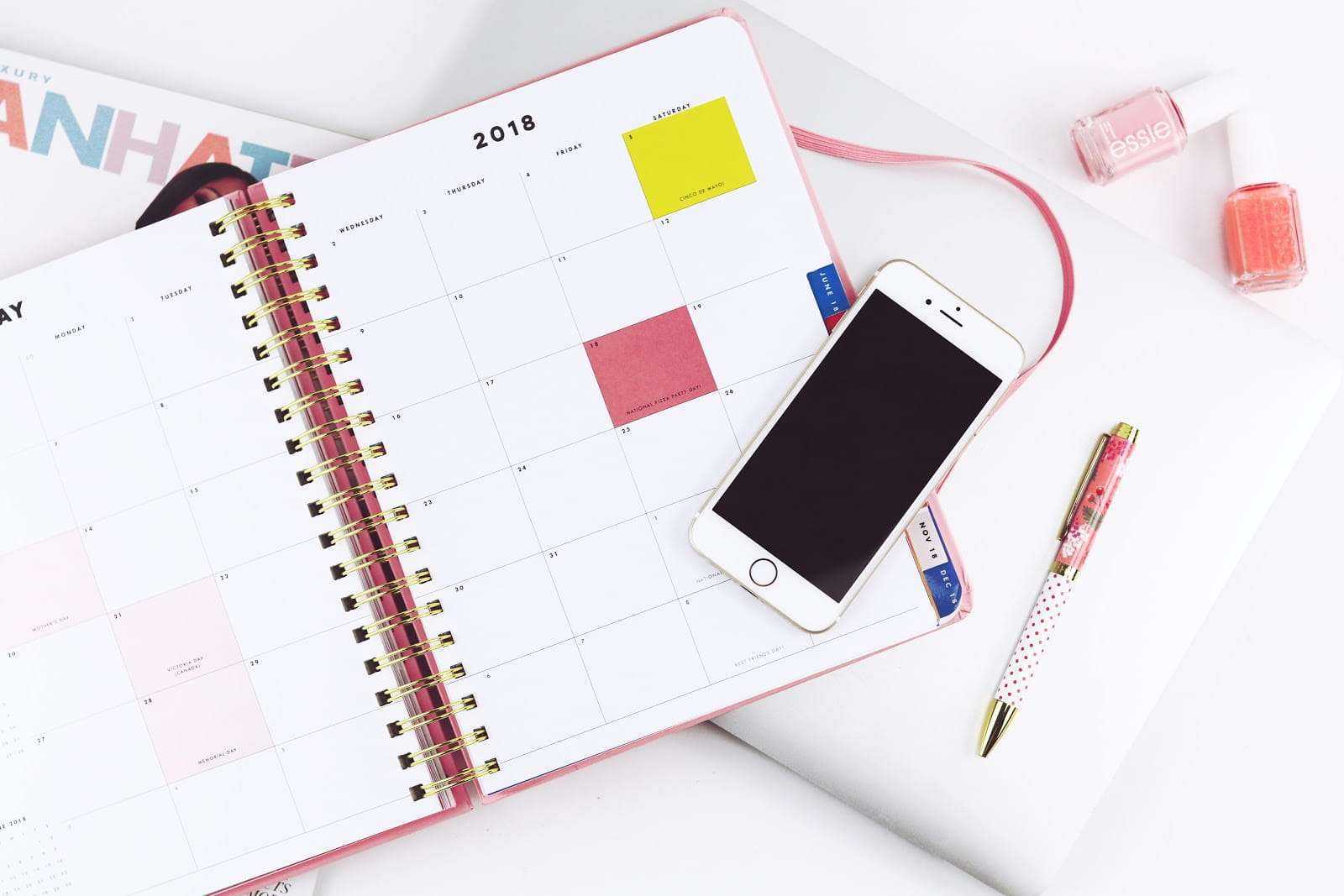Freelancing means working remotely, having much more freedom, being closer to our children, becoming a digital nomad…
Many reasons may lead a worker to become a professional freelancer. But deep down they feel unconfident about it because we are all too accustomed to formal and traditional jobs.
The unconfidence that arises from owning our professional careers and driving our very own vehicle along the way may sometimes hold us back. Worry not! This happens to a lot of people and you’re definitely not alone in this feeling.
Today I’d like to share with you 17 tips that you’ll find encouraging and which will help you jumpstart your freelancer career.
It doesn’t matter whether you are a Marketing professional like myself, or a web designer, or an IT specialist –this applies to everyone!
I worked as a employee for 20 years and I can tell you that traditional work is very different from self-employment. At the beginning I didn’t quite get which the best method to start into freelancing was. I couldn’t find a step-by-step tutorial.
It was at that moment when I resorted to creating this guide including the main points you should take into consideration to become a successful professional. I truly expect they can help as a guide and also to improve your current business.
Then, with no further delay, let me introduce you to some of my best tips as a freelancing pro.
1. Knowing and defining your professional skills
When I started my journey into professional freelancing, I used to offer services related to strategic planning and project management. I did so because over the last 10 years that had been my job within multinational companies. That’s why I knew it was a skill I could make immediate use of.
Later on, I found out some other things I was good at which would widen my range of opportunities and help me thrive in the freelance world.
An interesting tip that actually helped me along this self-knowledge process was reading a book titled “Now, Discover Your Strengths“. I took the test and put the results into practice –then I could reflect about how to improve my performance.
Most people spend their time worrying about what they “should” do well while actually what you need to focus on is basically what you want to do. Whatever makes you feel joyful at accepting a project!
Now you might wonder: How should I start? Well, what about writing down 5 things you’re good at? Don’t be concerned about the business point of view! For instance, my list could be as follows:
- Empathy
- Easy communication and good writing skills
- Management expertise
- Command of other languages (English and Spanish)
- Responsible and organized
Every professional freelancer has their own abilities.
2. Choosing a market
After finding out your skills, it’s time to focus on the type of freelance jobs you’d like to do and what clients you’d like to work for.

It’s very important to define the first stage accurately as it has a direct impact here –the market is the result of 3 elements:
What you like to do + what you know how to do + what the market wants and how much they’re willing to pay for it = MARKET.
At the beginning, however, we all tend to accept just any offer out there to help us build our portfolio and get chosen. But, as you dive deeper into freelancing, you’ll need to be more strategic with the jobs and clients you accept.
Choosing and segmenting your market is important because once you develop your area of expertise, you become a reference to others –experts can charge higher fees for their services.
In an article published by Neil Patel, one of the best-known names in Digital Marketing appearing among the Top 100 entrepreneurs under 30 years of age, he explains the importance to define your market as:
“A business with a specific market has many more opportunities to stand out and add value to its products. With a much smaller investment, it’s possible however to reach out to an audience really interested in what you have to offer”
Think as a client: would you rather hire a business generalist? Or a professional specialized in solving your problem? I choose the specialist, every time.
Focusing properly on your freelance work, you may become the most wanted option when a client has a “problem” you can provide a solution to.
3. Going freelancer before quitting your job
How about starting to build your brand and adding projects to your portfolio while you still keep your job?
If you make this transition, you can get some advantages:
- Increasing your income before quitting: Save money during the first months of your performance as a pro freelancer. It may take some time to finally have a few fixed clients or a good amount of projects.
- Learning to work with tight deadlines: Work overload (like demanding freelance projects) and accountability for deliveries within a deadline will quickly teach you how to manage your own business.
- Being selective: You can make a wiser choice of your freelance projects while still having a job, as you’re not fully dependant on that income yet.
- Taking time to improve: Seize this transition moment to get updated with online training courses and to learn new techniques in your area.
In an interview for the Exame magazine from Brazil, co-founder of Workana Tomas O’Farrell gives some interesting tips. He says that the ideal money savings for freelance starters should match a year of paid expenses.
4. Learning self-discipline
Self-discipline is one of the outstanding qualities of successful freelancers.
Having the ability to focus on one task until its end for some people is easier than for others, but it’s also a feature that can be nurtured. Follow the steps you need to help yourself, check how to minimize distractions, make a list of tasks, anything you might find helpful!
If you work on improving your self-discipline, you’ll see it gets easier every day.
5. Defining your workplace

You may choose to work from home, which has been my option in this case. It has some advantages, though it’s also challenging. If this is your choice as well, it will only work provided you follow these conditions:
- Your family needs to understand that you are working and that the fact that you are at home does not mean you are available for chatting.
- Never work from bed or at the kitchen table. Having a specific spot will make all the difference.
- Take off your pajamas for work.
Nowadays, a very common option is co-working spaces. In these areas you will find many options, from renting a desk to renting an entire room exclusively for your business.
6. Building your portfolio
Don’t try to save time when completing your profile. Do it as detailed as possible and try to see it from the client’s perspective. Add as many details as you can. I don’t recommend posting a selfie –you should look professional.
Do not add any expertise you don’t actually have, as the lie won’t be held for long and a negative experience such as this for the contractor might end up in bad rating for you.
7. Promoting your work and doing some networking

It is possible to do some networking through the internet and to promote your work as a freelancer. Using social media such as Instagram and Linkedin is an excellent means to promote your job and content –you can see and get seen.
Participate in forum discussions and information exchange groups. Who knows if one of your contacts in time might become your client?
But do not forget that there is also an unconnected world out there. Participate in associations, conferences, fairs and events. These have always been a great source of new potential clients, a showcase of your work or even a way to find people whose services could complement yours.
Also, at these places you always have a huge opportunity to know more about and follow the changes of your industry, as well as the new tools that can help grow your abilities and your business.
8. Building your profile on a freelance platform
Freelance sites are an excellent chance for those looking for new projects and there are some very important aspects to consider when joining one of them.
If you are just starting your freelance lifestyle or even if you’re an experienced professional, these websites provide an outstanding opportunity to build your portfolio, gain experience on a professional relationship model and find out if this is your best choice. Some key areas you should consider when signing in:
- Make sure you understand the terms and conditions of each platform.
- Check the reception methods of the platform and whether they are available on your country.
- Optimize your profile, have it 100% complete –with a good photo, your professional experience, portfolio and the services you offer.
- Find out if the site is trustworthy and if it is translated into your language.
Workana is the largest freelance platform in Latin America. You can find jobs in the most diverse areas. The most wanted areas are: web and graphic designers and programmers, marketing and computer professionals, translators and content producers.
Its main advantage is an app called Workana Time Report, available on the site, which helps the professional to make a list with tasks, while the client can follow up the work done and control the time dedicated to each project through these records.
Apart from all this, Workana offers a variety of payment options for freelancers such as bank transfers or Paypal, and you can also set up different reception dates. All transactions are made fast and safe –user-friendly and time-saving.
9. Defining goals
So, what took you to become a freelancer? What do you wish to accomplish as a freelancer? People say “I want more freedom” or “I want to be my own boss”.
Learn how to set your goals and how they are different from objectives.
The IBC Coaching site has recently published an article that provides a great explanation about definition of goals and how to achieve them.
10. Becoming productive

Creating your own agenda and keeping your compromises to date might be quite challenging. Being a freelancer is different from working in a corporate environment –nobody is going to check if your work is getting done.
You’ll have to find out what works better to keep your production and motivation levels high and your planning well organized with the shortest delay.
Focus on organization –it’ll help you save a lot of time.
Some tools like Trello and Asana (which we actually use internally) can be very helpful to manage your work and projects and to have a good visualization of everything you need to deliver.
Learning about time management methods is also a great tool for your daily productivity.
11. Defining the value of your freelance work
This is a very complex task… And even the most experienced freelancers find it difficult here. It’s very usual to charge less, for fear of losing the ideal job.
You’ve probably already felt unconfident about this, wondering if the client will reject your bid, or frustrated at knowing you could have charged much more –when the client approves your bid instantly, without hesitation.
But then, how do you define value for your freelance work?
I don’t think there is a definite value for a freelancer job. It ends up being a mix of aspects such as how demanding the project, how difficult the service and, of course, which your client’s budget is.
Here at Workana you can count on nice support from Freela Calculator. It’s a simple tool that helps you get an idea about how much you should charge as a freelancer. The good thing about it is that, in the end, it shows the average fee charged for your work category.
You can also analyze your skills. Check out profiles that are similar to yours and carry out a research about the fees they charge.
12. Learning how to gain clients
Take some time monthly or weekly to look for new projects (this will be possible according to your work load).
When sending your bid, show interest in understanding the client’s objective and let them know how you can make a difference. If you know what their objectives are, it’s easier to sell something they truly need!
When you send your bid, it’s your chance to introduce yourself, display your professional experience and the jobs you’ve done earlier.
After sending your bid and getting new projects, remember: do a good job! If in the end your client is satisfied, there’s a huge chance that they’ll recommend you to others. Recommendations and good reviews are key to freelancers.
13. Organizing your monthly work

If you are your own business, remember you’ll be doing everything on your own! Provide customer service, manage your finances, produce. You must hold great self-discipline to be able to balance it all.
Today I work as a full-time professional freelancer –and what initially brought me into freelancing was the fact that I wanted to be closer to my son. I need to balance the time I dedicate to my freelance job and the time that I spend as a supportive mother, taking my son to sports and school events.
You might wonder: Why is she saying all this? Simply because I have to brush off these hours from my day because they are not available for my professional job and therefore, I need to organize my agenda throughout the month so that nothing is left behind.
On the days I know I have more personal appointments, I often work overtime so as to help compensate for those hours that were dedicated to my son. That has worked pretty well for me!
Therefore, it doesn’t matter if you are working part-time or full-time –what is key is determining your work hours.
Create the habit of getting up early and carrying out your tasks under the same schedule. Having a routine is healthy for your mind and your body.
14. Don’t be afraid to say no!
Learn how to say no! I know it’s not easy to do so for a large number of reasons –mainly because you don’t want to leave your client with a last minute request.
Trying not to disappoint anyone might result in an extremely heavy workload for you and only you.
Learn one thing: no matter what you do, someone will always feel disappointed. It might be a client, for not being able to take on a project. Your family, because you’re working too hard. It might be yourself, stressed out with work overload.
Therefore, you should feel at ease when rejecting a project if complying with it is not within your possibilities.
In order to help you determine whether you can take on a new project or not, ask yourself these questions:
- Why am I accepting this project? Is it something I should be doing?
- Was it something I did wrong and now I have to find a way to solve it?
The big problem of accepting it all is that there may not be time enough for another project if you say yes to everything! You might also need to attend some webinars in your area or take an online specialization course.
15. Using a contract in all your projects
If you are starting into freelancing, avoiding contracts with clients is a basic mistake. Don’t worry about finding the perfect contract. Start by a simple model and improve it along the way. Many freelancers try to find the perfect contract and tend to forget their main focus –finding new projects.
To begin with, all you need is a general agreement that includes some basic though important terms, which your client and you must agree on. To make it simple, the terms of a contract must include:
- Originality of the job
- Confidential client information
- Payment terms with method and date
- Deliverables
- Termination
At the end, you can print it out, sign it personally or digitally.
Either way, my recommendation is that you leave out any type of bureaucracy at the beginning of your freelance career. By signing an online platform, such as Workana, for example, you can avoid this step.
The site itself is responsible for an efficient contract and protects both the freelancer and the client.
16. Being transparent with your clients
As a professional freelancer, you make up your own business and you should be proud of that, so, don’t hide from it.
Whenever a client is interested in your work, be straight-forward, explain the way you work, if you are a part-time or a full-time freelancer, the types of jobs you carry out, your deadlines and your work schedule.
Expectations must be aligned since the very start. Otherwise, you might find yourself in a conflict situation. It’s very usual, for instance, to get contacted by your client at 10 o’clock at night, expecting an instant answer from you –or even on weekends. If you don’t set out a few clear rules, they might be frustrated or you might get upset. Explain how the process works.
Share your experience and methods and show what each client can expect from your work along with your time and availability when responding.
Being transparent is not a weakness! On the contrary, it will help you become more confident and that could be a decisive factor to win over a project or to keep working on the same project for a long time!
17. Dividing your income into taxes and savings
Start dividing your income to cover taxes and to make some kind of saving. In general, the expenses you should think of are the following:
- Taxes – the percentage will depend on the type of business taxpayer.
- Work tools – In my case, I use some applications that are essential on a daily basis such as: Workana Premium Account, Adobe package, and a customized email account. Don’t forget to save some money for updating courses!
- Personal savings – The percentage I save each month is 12%.
The rest goes straight to my personal account and to my daily expenses.
Make some sort of chart to follow up your expenses, determining how much went in and how much went out from your ATM.
Conclusion
In order to start your job as a freelancer, you don’t need to follow every step and practice them as a bible.
Above I just meant to share some elements I consider important. If I had had the chance to get such recommendations at the beginning of my freelance experience I would have taken advantage of many things along the path.
These 17 tips are a summary of everything I would like to share with you to help you jumpstart your own business in a more structured way that can help you set the basis for a prosper and sustainable freelancing business.
You can be confident that by putting all these tips into practice on a daily basis, I’ve gained a huge personal growth.
Using Workana as the main means to get freelance projects has brought me the confidence and certainty of finding good jobs!
Today, I manage Workana’s social media here in Brazil and I write articles for the blog! Isn’t it amazing?



